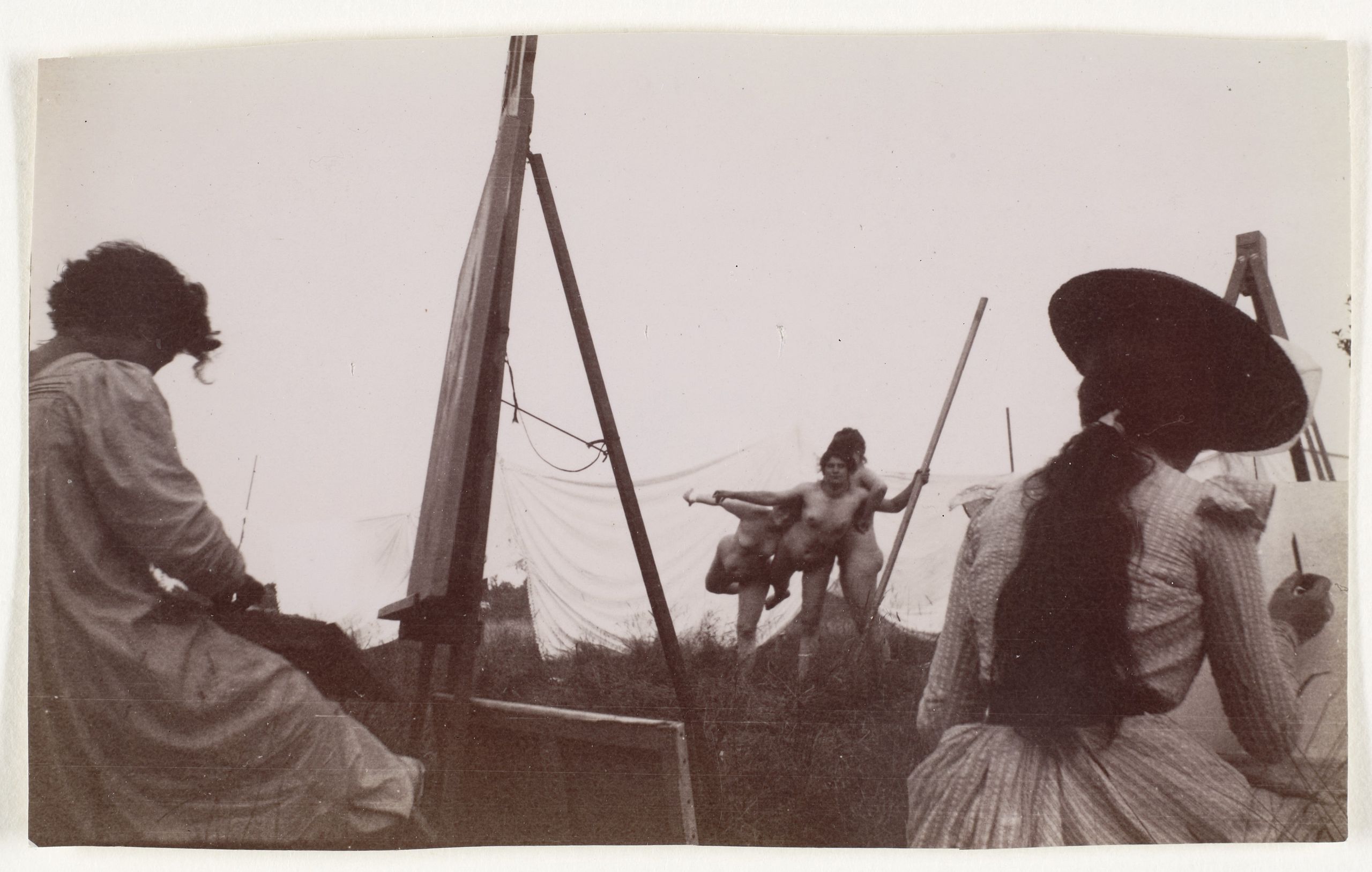Gestures of/at Art
DOI:
https://doi.org/10.58519/aesthinv.v6i2.14686Keywords:
models, life sessions, artist-model relations, portraiture, nudityAbstract
An odd occurrence within a live model session is that the model, while nude, is drawn in a way which renders irrelevant the nakedness. Participants may focus on the model's face, or draw the pose while heavily blurring breasts or genitalia—the unveiling of which is, presumably, partly what the model is hired for. Why? If a live model presents an opportunity to study human anatomy or embodied gestures without the interruption of clothing, participants would likely focus upon parts which normally remain private. Instead, it is not rare to see sketches and work which could have been produced while permitting the model to wear swimwear or even substantial clothing.
Nudity's status within the artist-live model relationship will be one topic of this essay. Three additional questions will be (1) the model's motivation; (2) the degree of agency attributed to the model: for some, a mere prop; for others, a full-fledged performer; (3) the role of 'art' in the live model session given how much of it remains incomplete and not displayed.
Downloads
References
Bell, Charles. Essays on the Anatomy of Expression in Painting. London: Longman, 1806.
Berger, John. Ways of Seeing. London: Penguin, 1972.
Borzello, Frances. The Artist’s Model. London: Faber and Faber, 2010.
Clark, Kenneth. The Nude: A Study in Ideal Form. London: The Folio Society, 2010.
Debaene, Aurélie. ‘The Art Model as Performer’. Aesthetic Investigations 5, no. 1 (2021): 7–27.
———. ‘The Truthful Portrait: Can Posing Be a Tool for Authenticity in Portraiture?’ The Journal of Aesthetics and Art Criticism 79, no. 4 (2021): 440–51.
Freeland, Cynthia. Portraits and Persons. Oxford: Oxford University Press, 2010.
Guyer, Paul. ‘Portraits, Persons, and Poses’. In Portraits and Philosophy, edited by Hans Maes, 47–61. New York: Routledge, 2020.
Heyward, Anna. ‘The Opposite of a Muse’. The New Yorker, September 2016.
Hollander, Elizabeth. ‘The Model in 19th-Century Anglo-American Literature’. In Dictionary of Artists’ Models, edited by Jill Berk Jiminez, 5–9. London: Fitzroy Dearborn Publishers, 2001.
IAMU. ‘Open Letter’. International Art Models Unite, 2022. https://artmodelsunite.wixsite.com/iamu/letter.
Irvin, Sherri. ‘Body’. In Encyclopedia of Aesthetics, edited by Michael Kelly, 410–14. Oxford: Oxford University Press, 2014.
Magee, Audrey. The Colony. London: Faber and Faber, 2022.
Maughan, William L. The Artist’s Complete Guide to Drawing the Head. New York: Watson-Guptill Publications, 2004.
Mears, Ashley. Pricing Beauty: The Making of a Fashion Model. Berkeley: University of California Press, 2011.
Nead, Lynda. The Female Nude: Art, Obscenity, and Sexuality. London: Routledge, 1992.
Phillips, Sarah R. Modeling Life: Art Models Speak about Nudity, Sexuality, and the Creative Process. Albany, NY: SUNY Press, 2006.
Postle, Martin, and William Vaughan. The Artist’s Model: From Etty to Spencer. London: Merrell Holberton, 1999.
Robinson, Jenefer. ‘Truth and Empathy in the Portraits of Kokoschka’. In Portraits and Philosophy, edited by Hans Maes, 153–70. New York: Routledge, 2020.
Taylor, Pegi. ‘A View from the Platform’. In Dictionary of Artists’ Models, edited by Jill Berk Jiminez, 1–4. London: Fitzroy Dearborn Publishers, 2001.
Walden, Kenneth. ‘The Sublime Clara Mather’. In Portraits and Philosophy, edited by Hans Maes, 269–86. New York: Routledge, 2020.
Waller, Susan S. The Invention of the Model: Artists and Models in Paris, 1830-1870. Aldershot: Ashgate, 2006.
Downloads
Published
Issue
Section
License
Copyright (c) 2023 Tzachi Zamir

This work is licensed under a Creative Commons Attribution 4.0 International License.
Authors who publish with this journal agree to the following terms:
Authors retain copyright and grant the journal right of first publication with the work simultaneously licensed under a Creative Commons Attribution License that allows others to share the work with an acknowledgement of the work's authorship and initial publication in this journal. Note: up to volume 4 issue 1, an incorrect copyright line appears in the PDFs of the articles.
Authors are able to enter into separate, additional contractual arrangements for the non-exclusive distribution of the journal's published version of the work (e.g., post it to an institutional repository or publish it in a book), with an acknowledgement of its initial publication in this journal.
Authors are permitted and encouraged to post their work online (e.g., in institutional repositories or on their website) prior to and during the submission process, as it can lead to productive exchanges, as well as earlier and greater citation of published work (See The Effect of Open Access).






